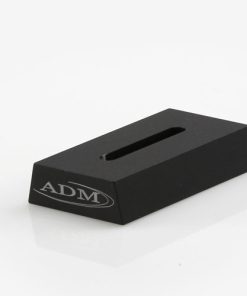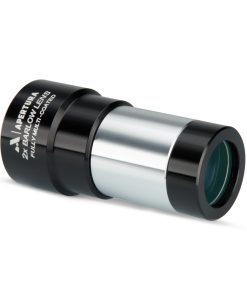Explore Scientific Losmandy G-11 PMC-8 GoTo Equatorial Mount – ES-G11PMC8-00 Explore Scientific
$ 4.199,99 $ 1.050,00
Losmandy G-11 Equatorial Mount & Tripod
with Explore Scientific PMC-Eight GoTo System
Explore Scientific has designed the perfect mount to highlight their PMC-Eight GoTo System! First, we will discuss the Losmandy G-11 Equatorial Mount, and then go over the innovative “OpenGoTo” computerized drive system by Explore Scientific.
This Explore Scientific Losmandy G-11 mount has been precision machined of stainless steel and aluminum and then black-anodized. With an instrument capacity of 60 pounds, the G-11 mount provides astrophotographers with a solid platform to mount their mid-to-large-size Schmidt-Cassegrain and refractor telescopes, along with the other instruments that constitute their astrophotography rig.
The Losmandy G-11 Mount and Tripod is a top performing astronomical instrument that has withstood the test of time. If you are an astrophotographer looking for a high-quality mount to support your telescope, the Losmandy G-11 is for you.
Losmandy G11 Specifications:
- All machined aluminum and stainless steel, black anodized
- All stainless steel hardware
- One 3.750” diameter needle thrust bearing
- One 2.000″ diameter needle thrust bearing
- Two 1.500″ diameter needle bearings
- 5.625″ diameter, 7075 aluminum worm gear, 360 teeth
- Dual supported, ball bearing housed ground High Precision Brass Worm
- Variable slip clutch, both axes with one-knob tension design
- Fully locking, unique tangent arm design altitude adjustment, 14°-64°, large knob for easy alignment (8-68° possible, with small modification)
- Laser engraved latitude scale in 2° increments
- Single knob azimuth control, bi-directional ± 8.5°
- 5.0″ diameter laser engraved setting circles, 4-minute R.A., vernier reading to 1 minute / 1° Dec., vernier reading to 0.1°, R.A. circle engraved for Northern and Southern Hemisphere
- Porter slip ring design
- Dovetail saddle plate allows for the interchanging of any tube assembly; this reduces need for Dec weights
- Removable stainless steel weight shaft with safety knob
- Includes one 21 lb. counterweight
- 7 lb. and 11 lb. extra counterweights available as options
- Through-the-axis Polar Scope capability works in Northern and Southern Hemisphere; Note: the Polar Scope is optional
- The Losmandy G11 weighs 92 pounds including the 21 lb. counterweight
- Includes the Losmandy heavy-duty Folding Tripod
- Instrument weight capacity: 60 lb.
- Total Weight Capacity: 100 lb.
Losmandy G11 Folding Tripod Specifications:
- All machined aluminum, black anodized, powder coated
- Tripod height, adjustable from 33″ – 48″
- Extremely sturdy and rigid when assembled, for superior astrophotography
- Removable leg design for easy transporting
- Tripod (only) weight: 35 lb
Explore Scientific PMC-Eight GoTo System
The electronics of the PMC-Eight GoTo System are quite unique and special, and they are extremely robust. They include a Multi-Processor Micro-controller with 8 CPUs (thus the name) that run independently and are completely deterministic in their behavior. Within this multi-processor system is a 64 Kbyte EEPROM Non-Volatile Memory bank; a Wireless Ethernet 10/100 with full IP function which permits operation from anywhere using standard client software; the first commercially offered wireless ASCOM driver; serial port and standard ST4 auto-guiding port.
This PMC-Eight system is all controlled by a Windows app for PC, tablet, or phone with a full graphical user interface called ExploreStars – the first application from the OpenGOTO Community. The wireless ASCOM driver supports standard astronomy-related planetarium software and programs.
The Losmandy G-11 mount is moved by newly installed high-resolution .9° 400 count stepper motors with a micro-stepping controller that makes the motor work at 12,800 steps per revolution with drive rates accurate to a few arc-seconds per day.
The Explore Scientific ExploreStars app, available at the Microsoft App Store, has basic functions found in other GOTO systems, with an important exception, the app, and the command language driving the PMC-Eight is open source – meaning anyone can modify this software or create their own software through Explore’s Software Developers Kit (SDK) – and you can download your modified software onto the PMC-Eight electronics. Create a Messier challenge. Create a selectable list of objects you want to photograph and program that information into the software. Share it with the community of astronomers that are using this software.
Wait until you see the interface – its beauty and the graphics will impress you. A classic four-button pattern for guiding, centering, moving and slewing is displayed on the touch screen of your tablet or phone. Selectable and User Enterable GoTo, Slewing, Centering and Guiding Rate, as well as standard 1 star, 2-star alignment and 3-star alignment functions, are included. Tracking rates include Sidereal, King, Lunar and Solar, but you can also define your own tracking rate. There is a Synchronize function, a Search function, Coordinate input, Custom mount support using enterable stepper count scaling, and Polar Axis Correction.
The PMC-Eight has a database of 70,000 objects. The Hipparcos/Tycho II database is used for stellar objects. Where possible, the Bayer, Flamstead, SAO, HD/Harvard, DM, BD/CD/CPD, and GSC catalogs have been cross-referenced. The user can search by any of these designations to find a given star. When the system first starts, it loads the 2,000+ stars of magnitude 5.5 and brighter. The user can load the additional 68,000+ star catalog as needed. For non-stellar objects, the RNGC/IC catalog is used. The system is designed so the user can update the provided catalogs and create their own catalog using tables and scripts in Microsoft Access. Also, each object has a unique ID number, so users can report errors and omissions.
Explore Scientific includes the RA Extension Kit ($295 value) which enables the user to split the G11 mount head into two easy to carry pieces and is used to ensure seamless tracking through the meridian. Explore Scientific also provides a robust motor assembly which includes a helical coupler connector for the motor and worm block system as well as a heavy motor adapter plate. This results in a high-performance system for your astrograph.
Quick Shipping and Professional Packaging
Due to our longstanding partnership with UPS FedEx DHL as well as other major international carriers, we are able to provide various shipping options. Our warehouse personnel are well trained and will be able to pack your goods in accordance with the exact and precise specifications. Your goods are thoroughly checked and securely secured prior to shipment. Everyday we deliver hundreds of packages to our customers from all over the world. Our determination to be the biggest online retailer in the world is shown by this. The warehouses are located situated in Europe in the same way as they are in the USA.
Note: Orders containing multiple items will have a separate processing period for each item.
We will carefully examine all products before they are shipped. Today, the majority of orders will be delivered within 48 hours. The delivery time will be between 3-7 working days.
Returns
We don't manage the stock at our warehouse and factory. The actual inventory may fluctuate at any time. It's possible that you may not receive your order once it's been placed.
Our policy is for 30 days. We are unable to return or exchange your purchase after 30 days since the purchase.
In order for your item to be eligible for return the item must not be opened and in the condition you received it. It must also remain in the original packaging.
Related products
Telescope Accessories
ADM Accessories CGEM Knob Upgrade – Orange Tripod Knob Set – CGEM-TKS-OR ADM
Telescope Accessories
ADM Accessories CGEM Knob Upgrade – Two Orange Anodized Spreader Bar Knobs – CGEM-SB-OR ADM
Telescope Accessories
ADM V Series Dovetail Bar for Celestron 8″ SCT – Orange Anodized – VC8-O ADM
Telescope Accessories
Telescope Accessories
ADM Accessories D Series Dovetail Plate for Celestron 9.25″ SCT OTA – DC925 ADM
Telescope Accessories
ADM Accessories Vixen Style Dovetail for Celestron C8 – VC8 ADM
Telescope Accessories
ADM Mini Electronics Pier Knobs for Celestron CGE Pro Mount – CGE-PRO-MP ADM
Telescope Accessories
ADM Accessories CGEM Knob Upgrade – Two Orange Anodized Rosette Saddle Knobs – CGEM-SAD-OR ADM
Telescope Accessories
ADM V Series Dovetail Plate for Celestron 9.25″ SCT – Orange – VC925-O ADM
Telescope Accessories
Apertura 0.75X 2″ Focal Reducer For RC Telescopes – A-RCR Apertura
Telescope Accessories
ADM Accessories CGEM Counterweight Bar 22 Inches – CGEM-CW ADM
Telescope Accessories
Telescope Accessories
ADM Accessories CGEM Knob Upgrade – 2 Azimuth Knobs – CGEM-AZ-OR ADM
Telescope Accessories
Apertura 1.25″ Neutral Density Filter 13% Transmission – ND96-0.9 – A-ND91 Apertura
Telescope Accessories
ADM Replacement Spreader Bar Knobs for Celestron Advanced VX Mount – VX-SB ADM
Telescope Accessories
ADM Accessories Mini Dovetail Bars for Mounting – MDS-M8 ADM
Telescope Accessories
ADM Accessories Tripod Knob Set for Losmandy G11 & Celestron CI700 Mounts – Red – TKS-RE ADM
Telescope Accessories
ADM V Series Universal Dovetail with 150 mm Rings – VDUPR-150 ADM
Telescope Accessories
Apertura 10mm 70º Super Wide Angle Eyepiece – 1.25″ – SWA10 Apertura
Telescope Accessories
ADM Accessories Celestron CGX Side-By-Side Adapter – CGX-SBS ADM
Telescope Accessories
ADM Accessories Vixen Style Universal Dovetail Telescope Mounting Bar – 3″ Long – VDUP3 ADM
Telescope Accessories
ADM Replacement Azimuth Knobs for Celestron Advanced VX Mount – VX-AZ ADM
Telescope Accessories
ADM Accessories Vixen Style Dovetail for Meade 10″ SCT – VM10 ADM
Telescope Accessories
ADM V Series Dovetail Bar for Celestron 8″ SCT – Extra Long – VC8-XL ADM
Telescope Accessories
Telescope Accessories
ADM Tripod Knob Set for Celestron CGEM DX Mount – CGEM-DX-TKS ADM
Telescope Accessories
Telescope Accessories
ADM Accessories Tripod Knob Set for Losmandy G11 & Celestron CI700 Mounts – Orange – TKS-OR ADM
Telescope Accessories
ADM V Series Universal Dovetail with 125 mm Rings – VDUPR-125 ADM
Telescope Accessories
ADM Accessories Vixen Style Universal Dovetail Telescope Mounting Bar – 14″ Long – VDUP14 ADM
Telescope Accessories
ADM Accessories Vixen Style Dovetail for Celestron 9.25″ SCT – VC925 ADM
Telescope Accessories
ADM Accessories CGEM Knob Upgrade – Altitude Locking Knob – CGEM-T-OR ADM














































